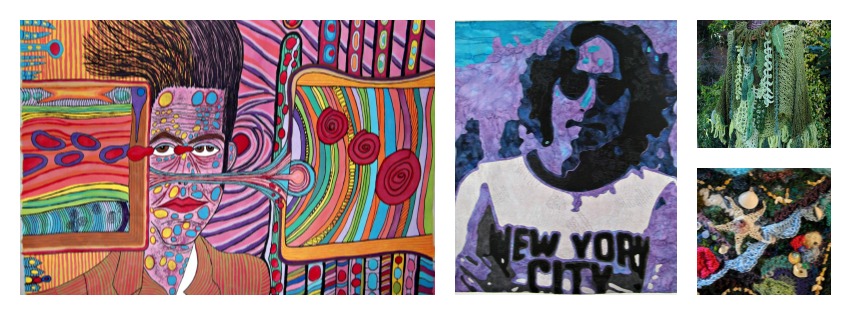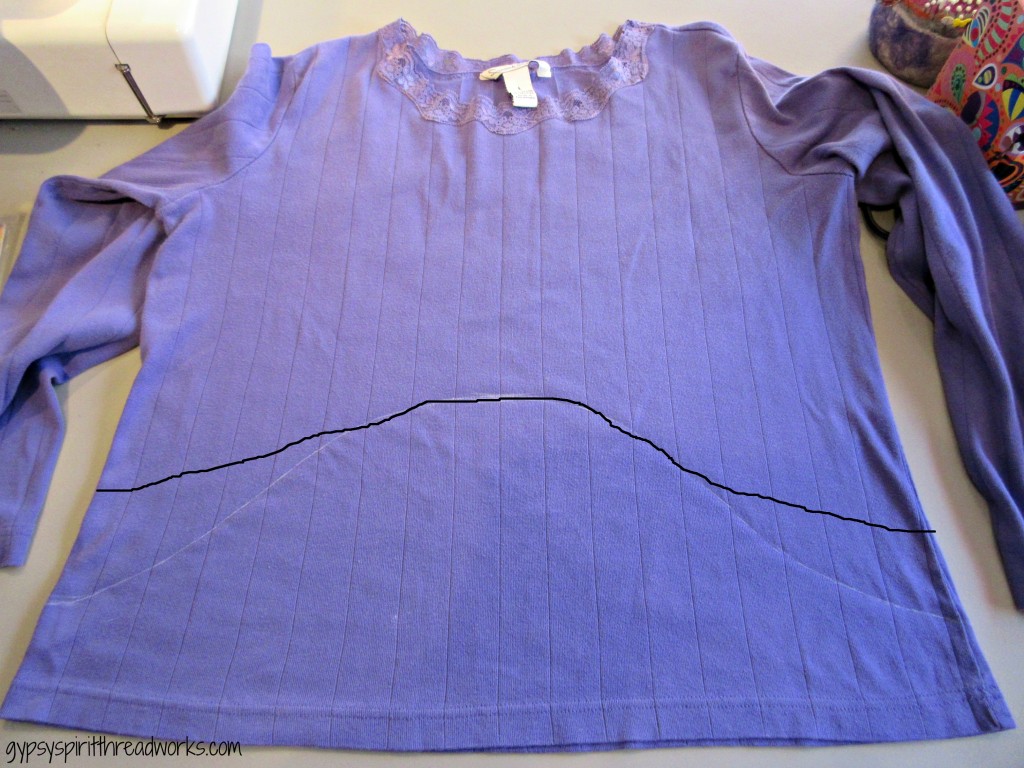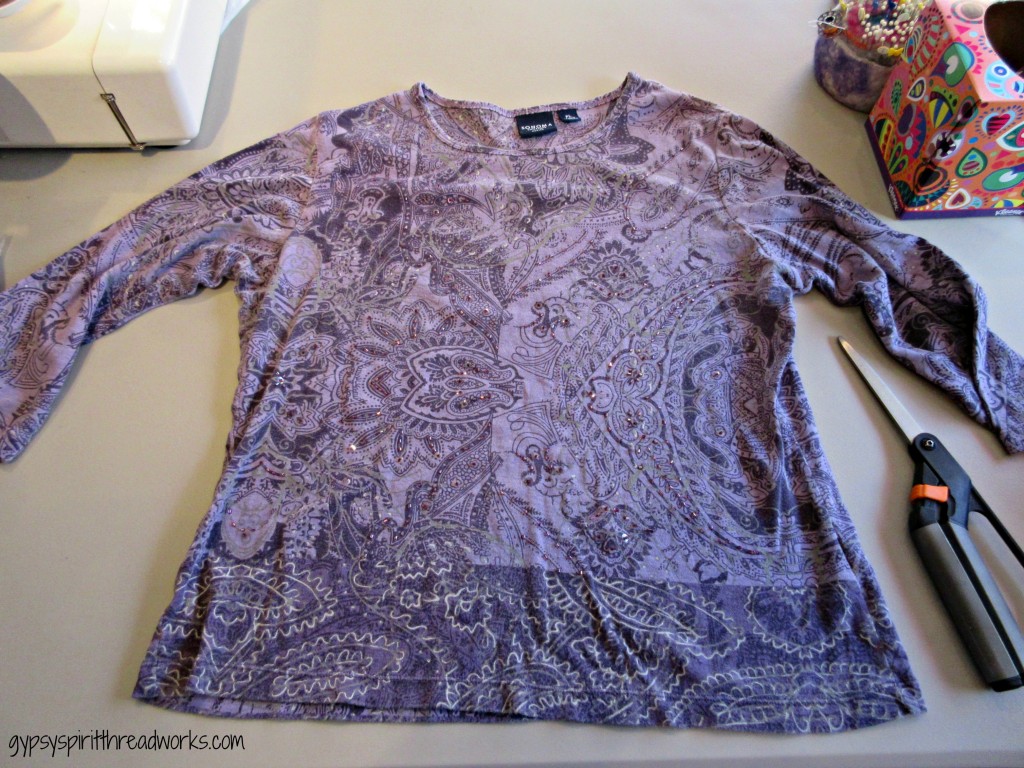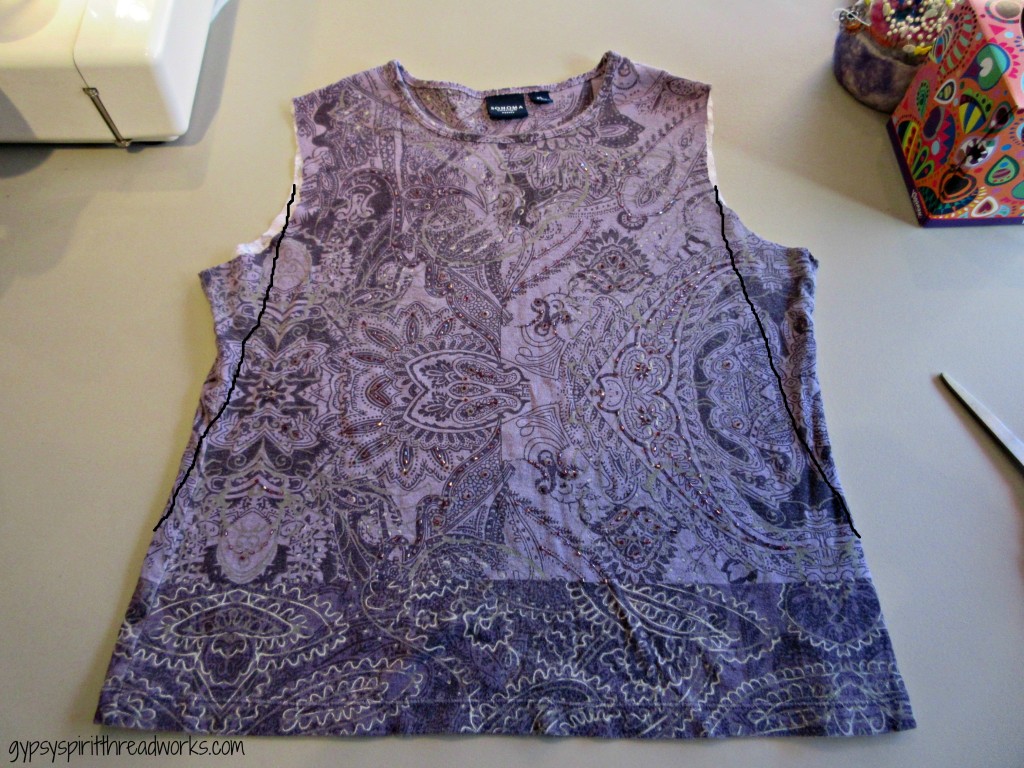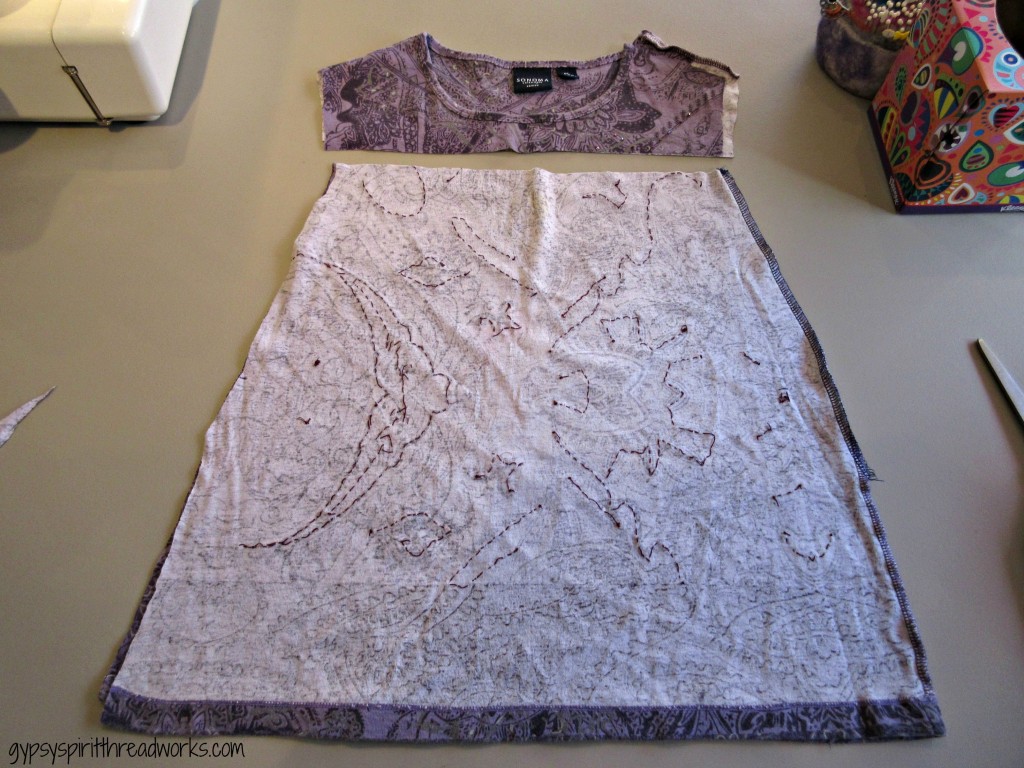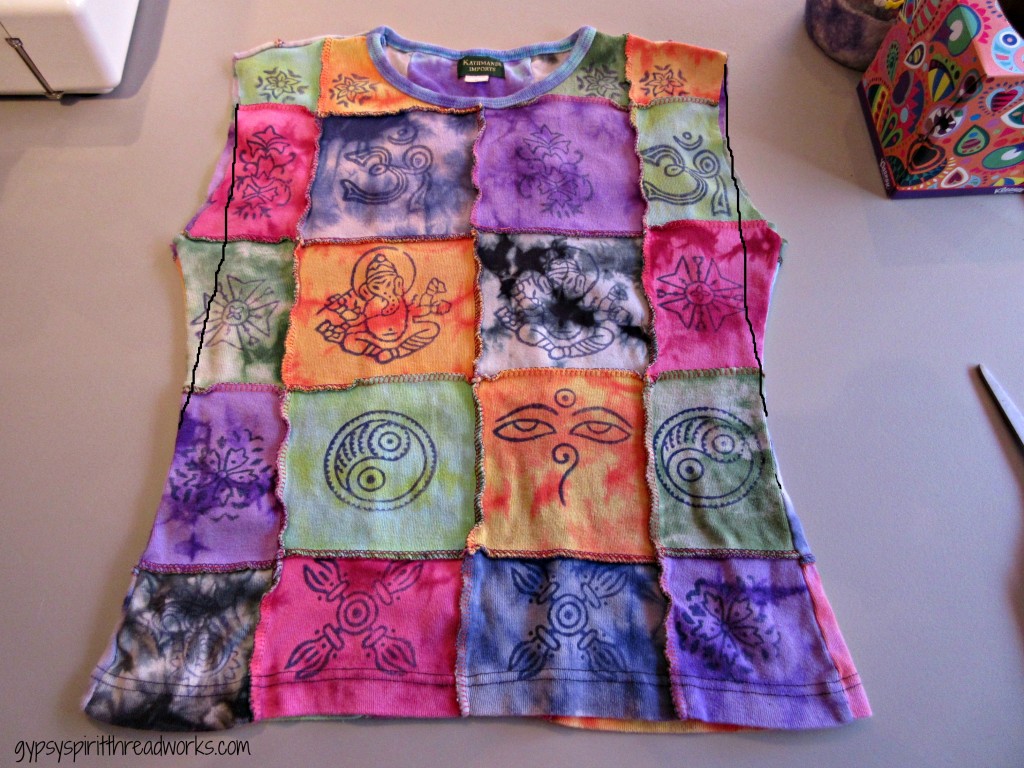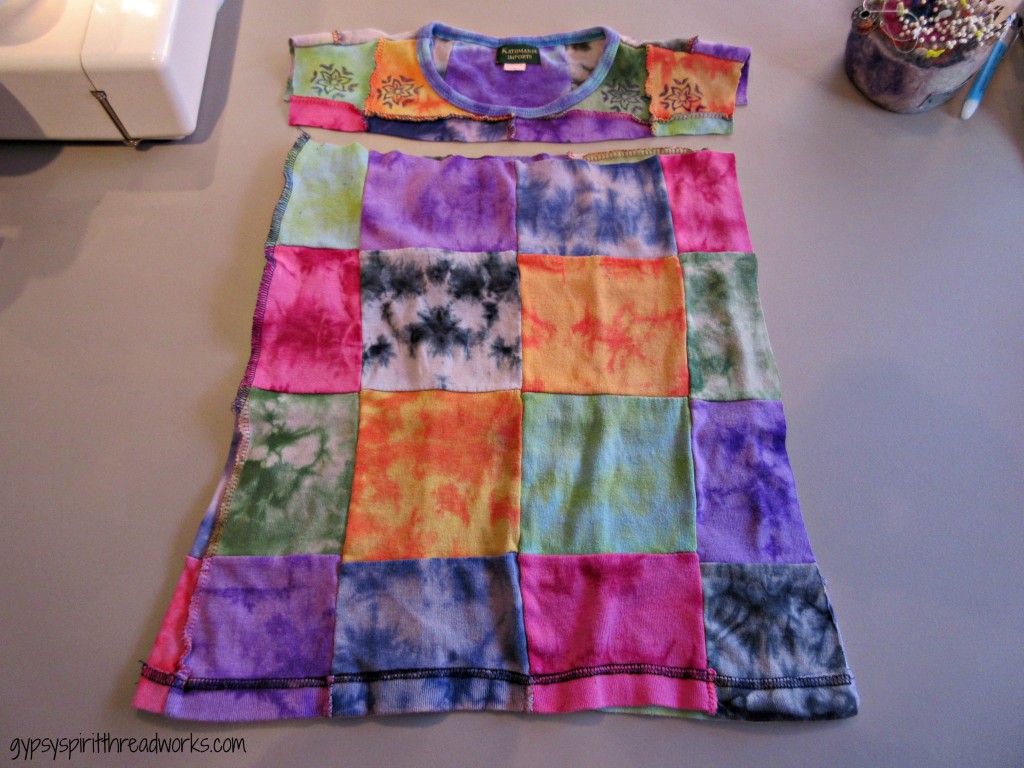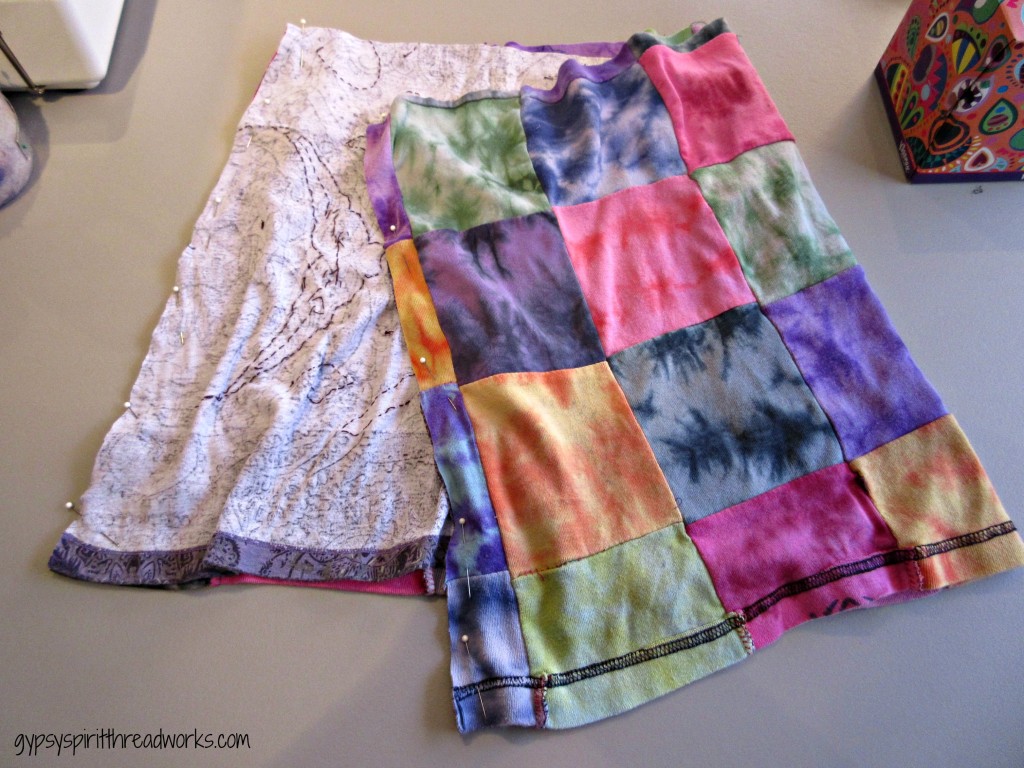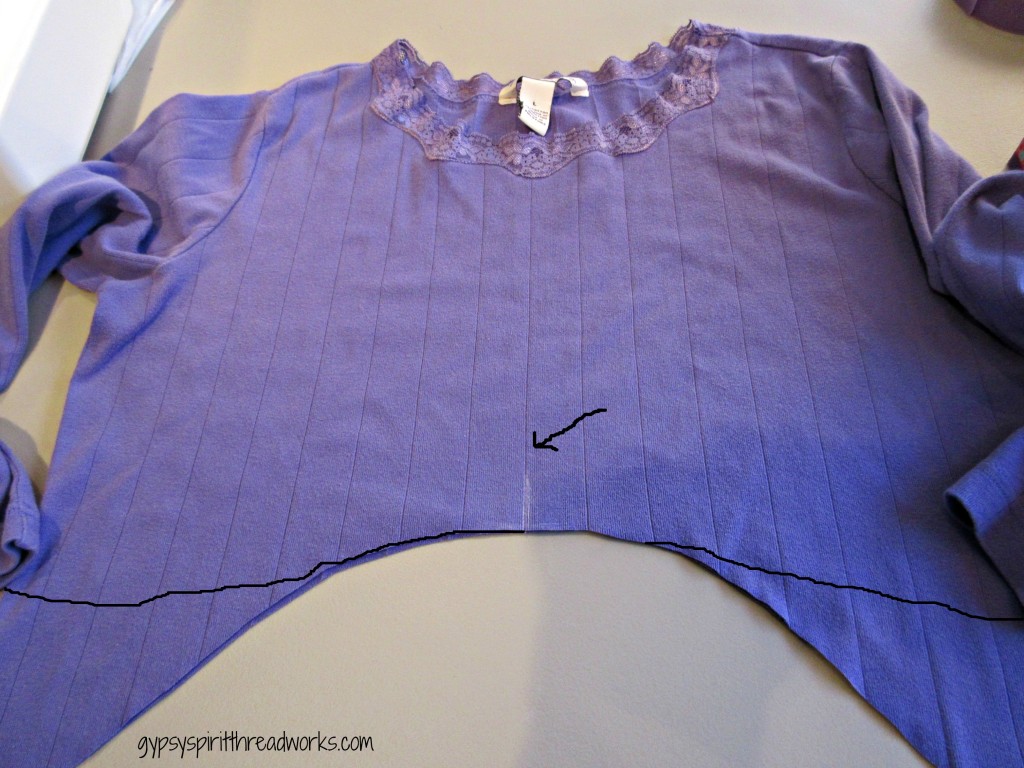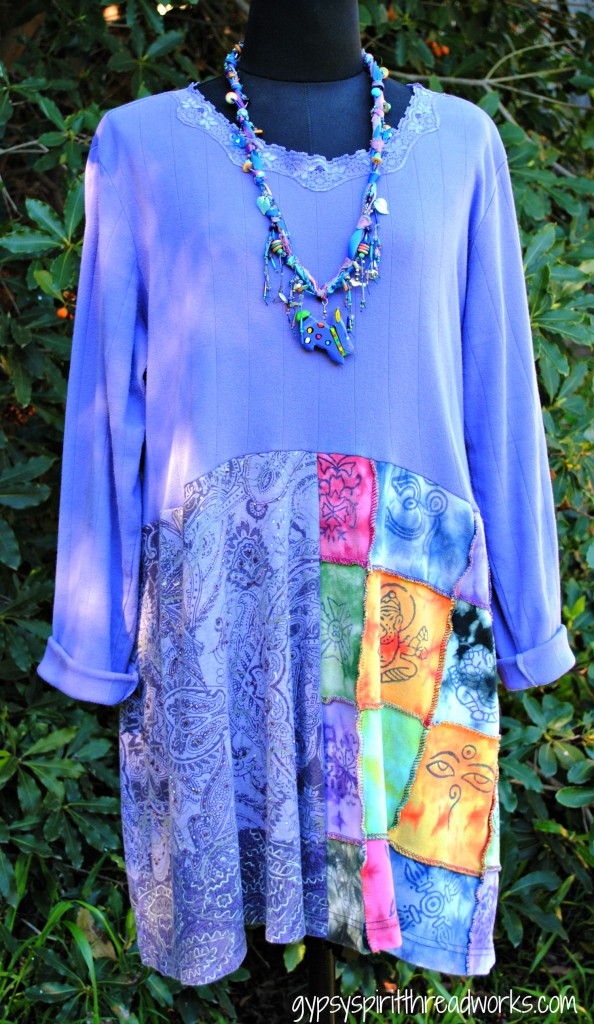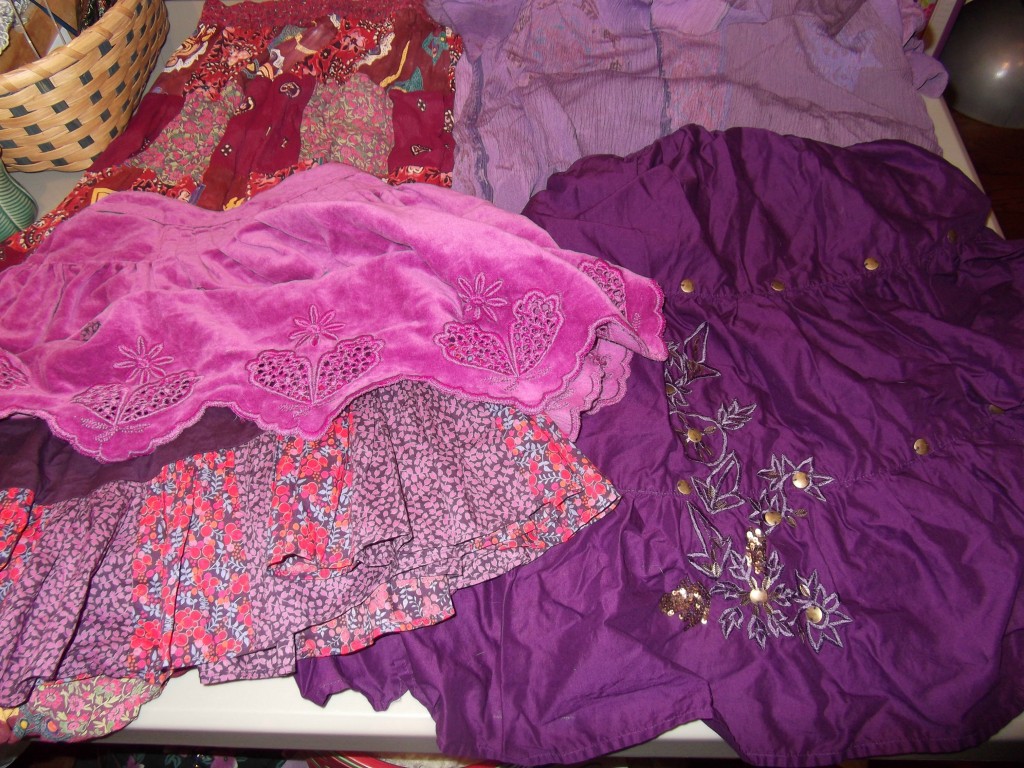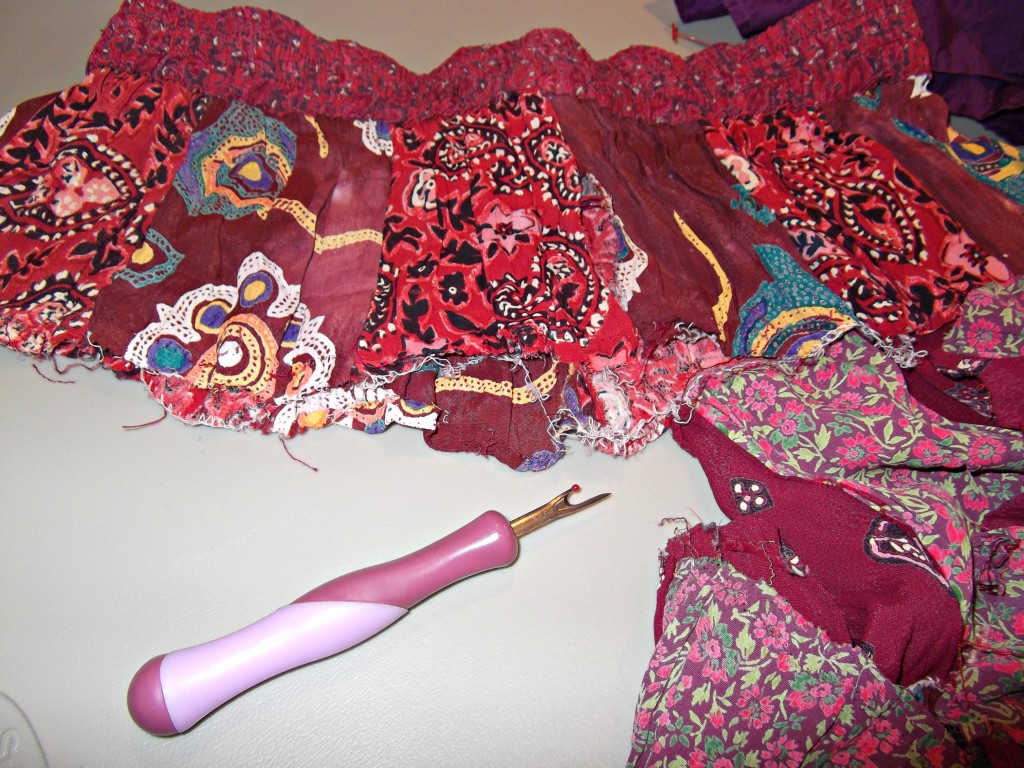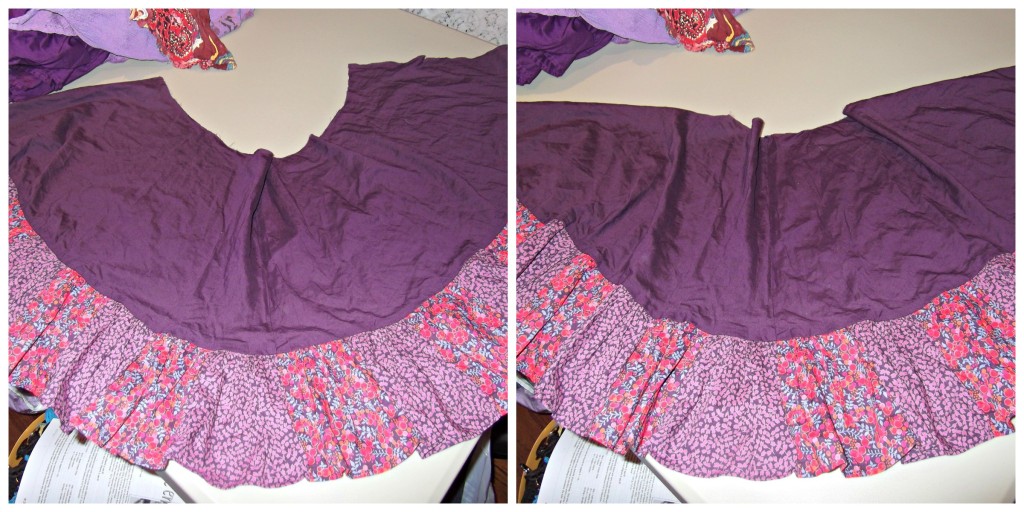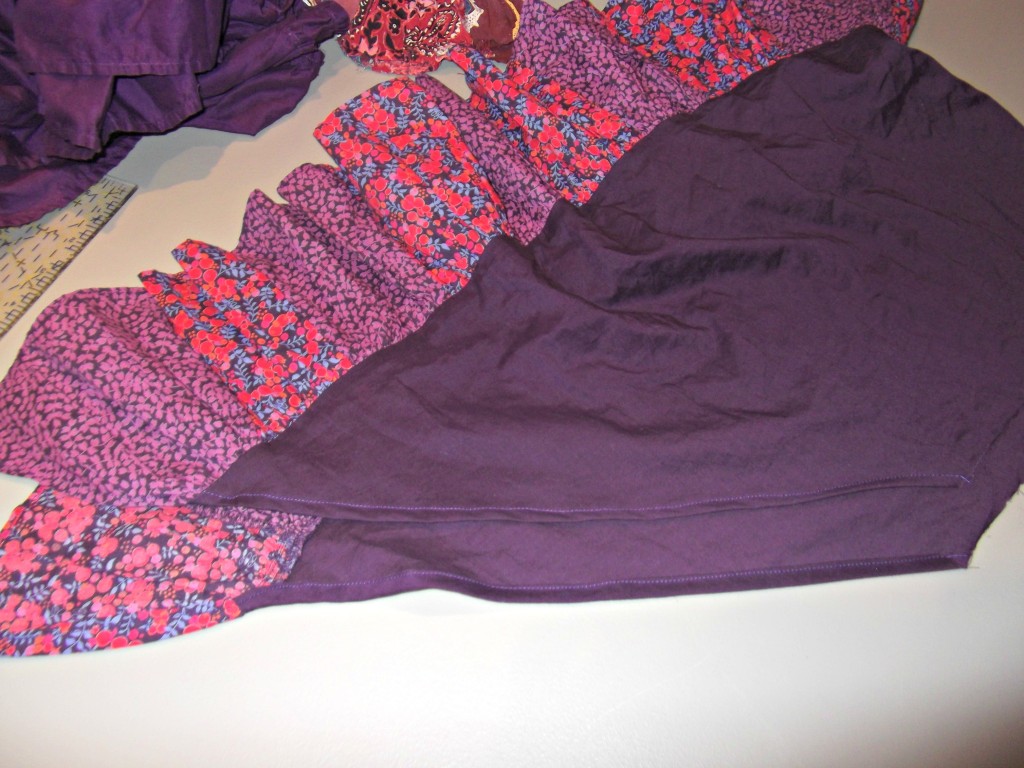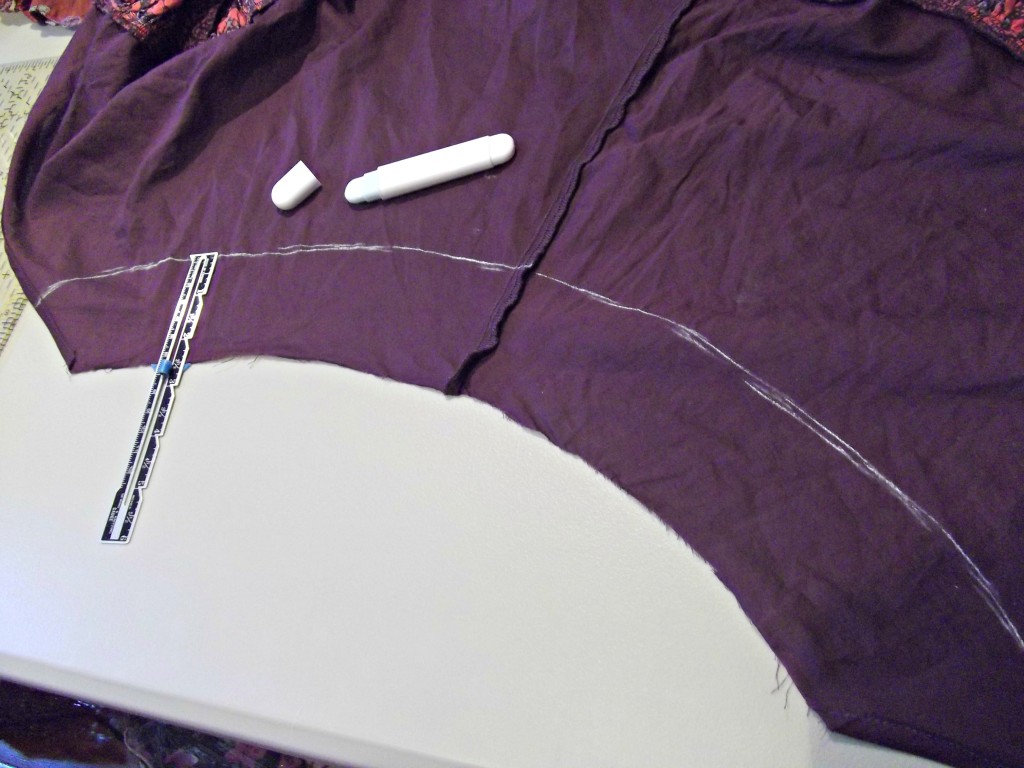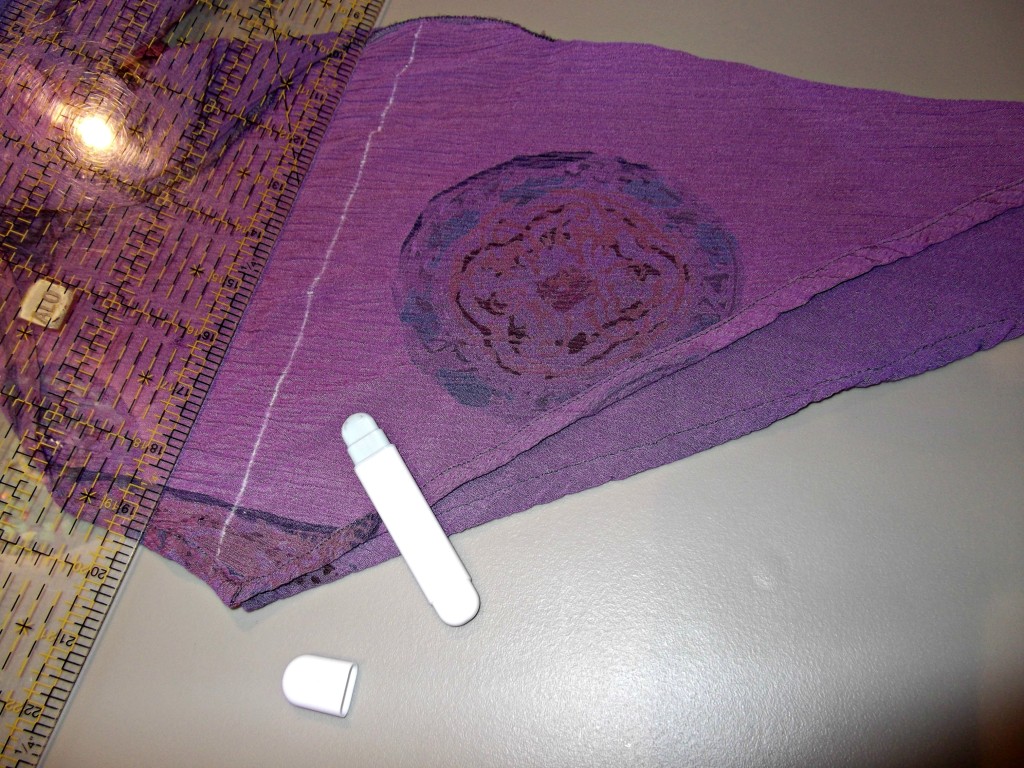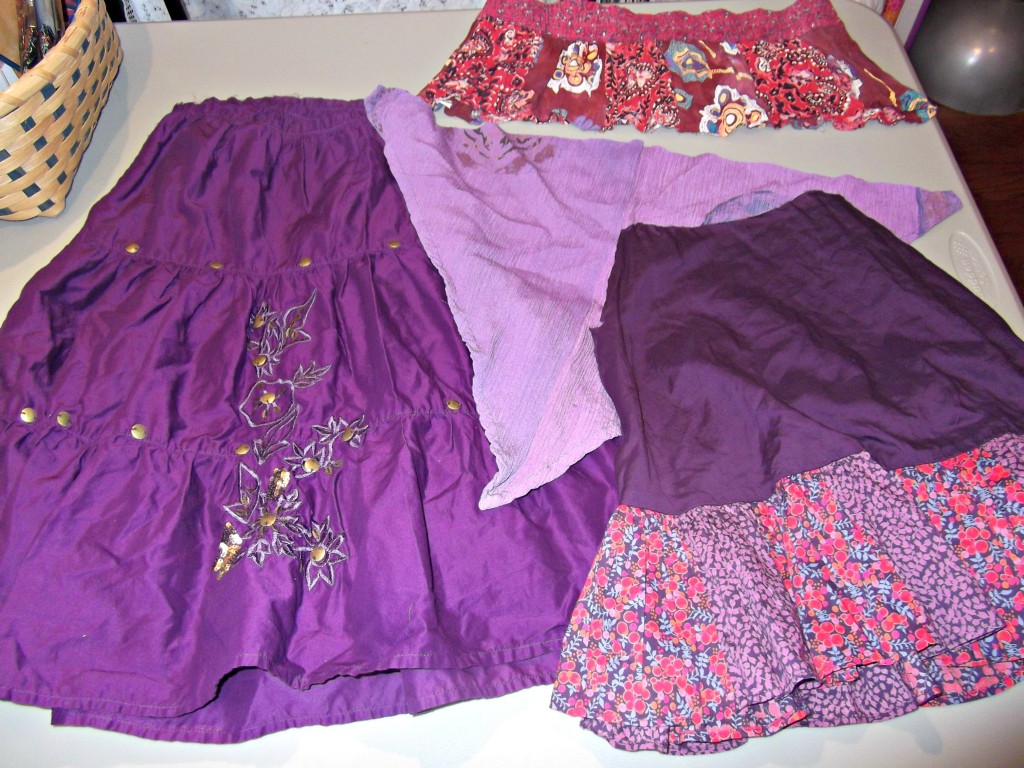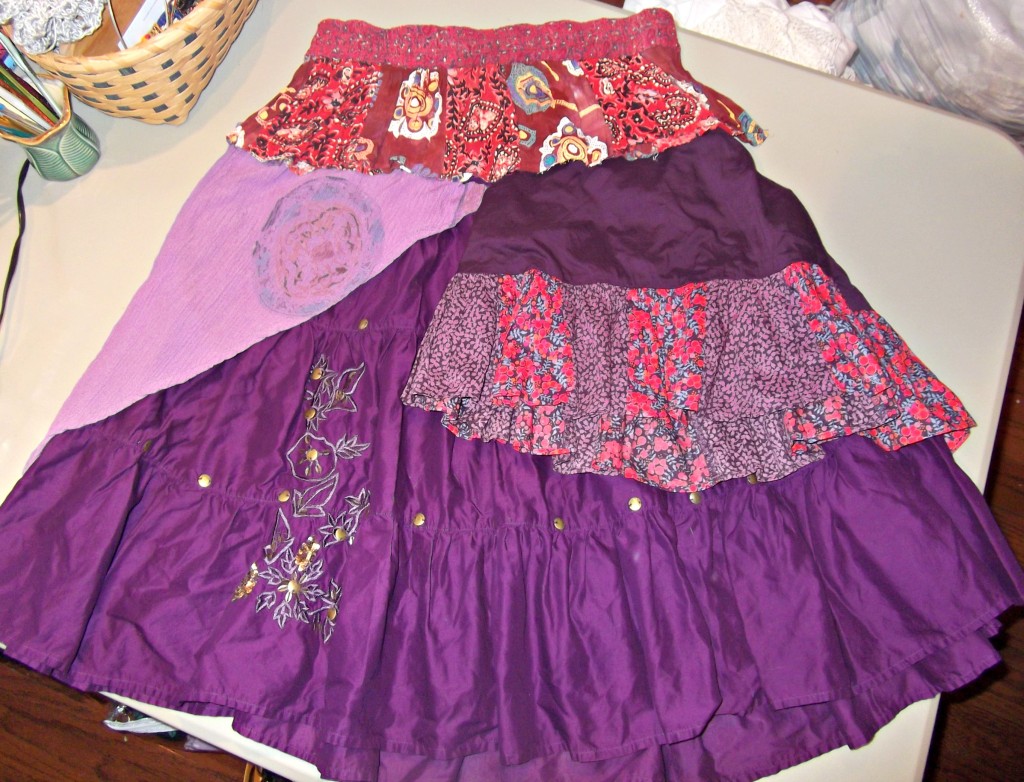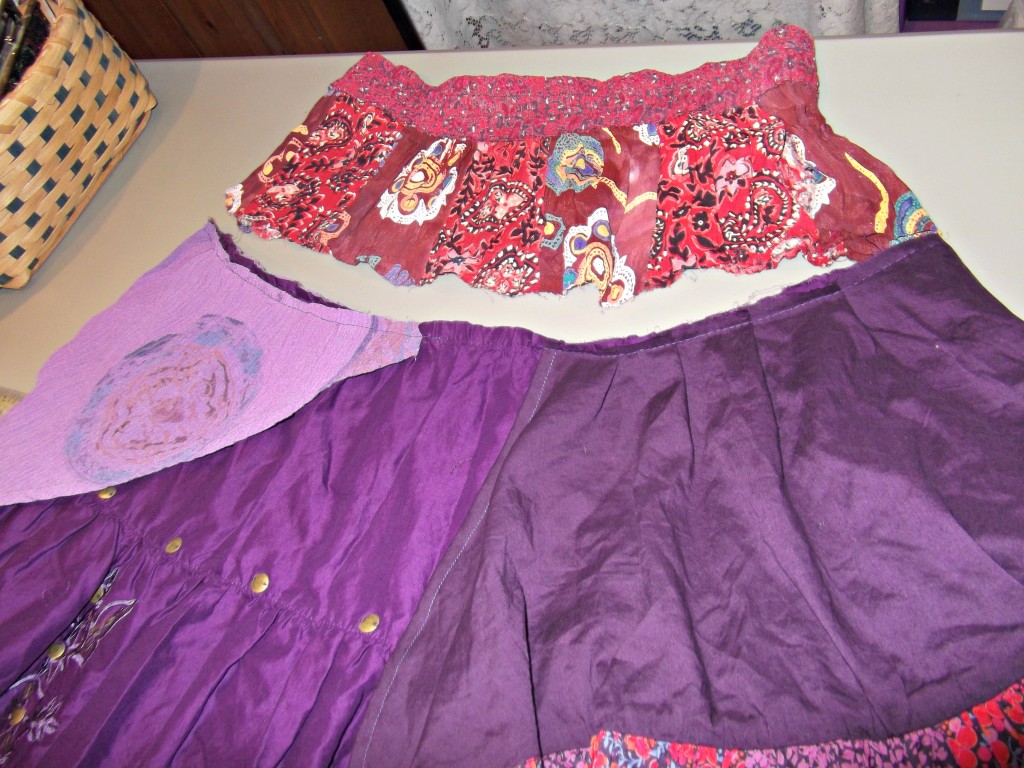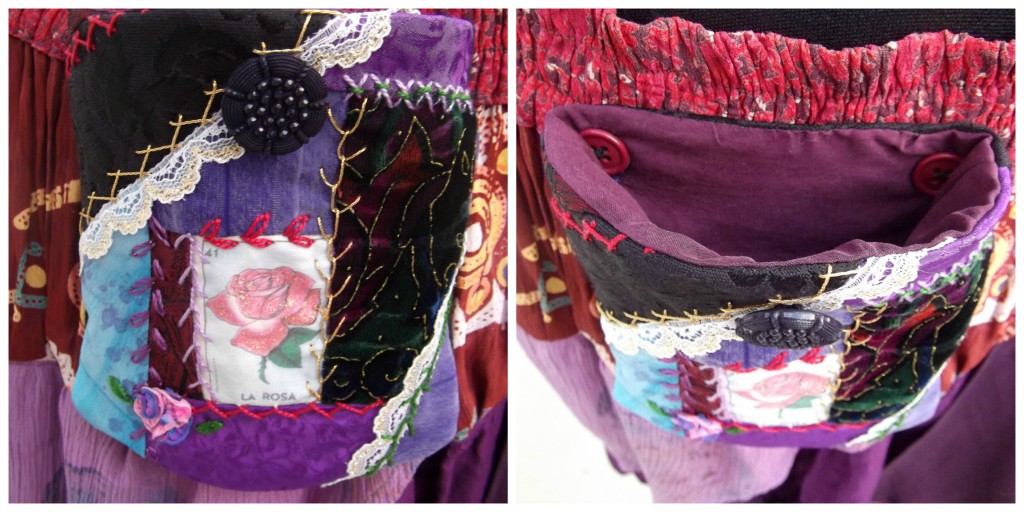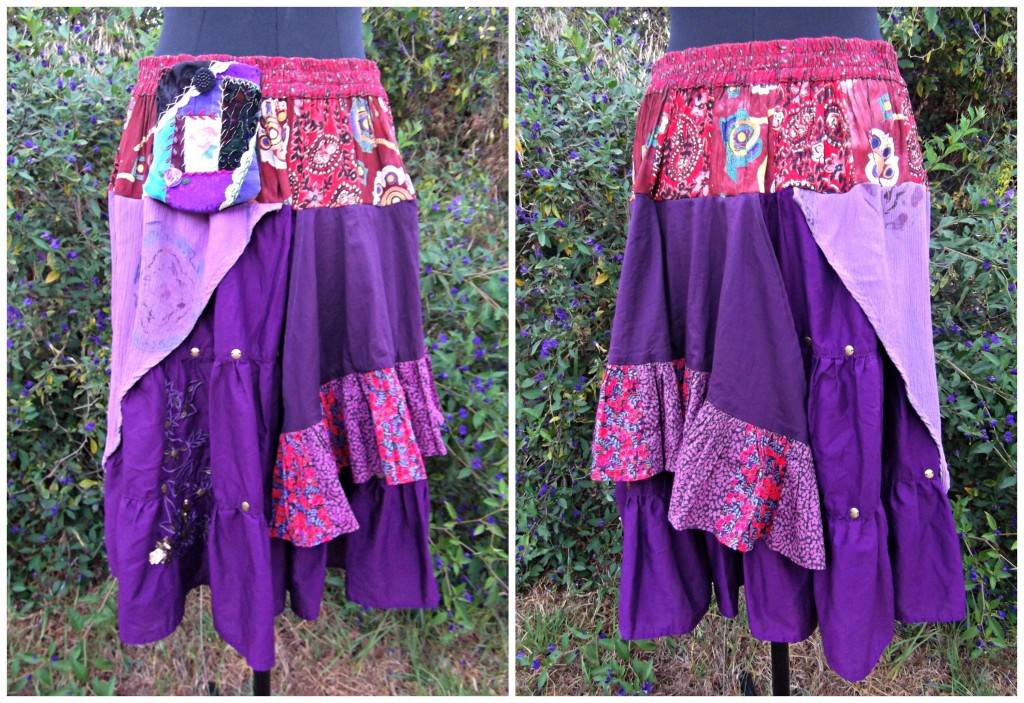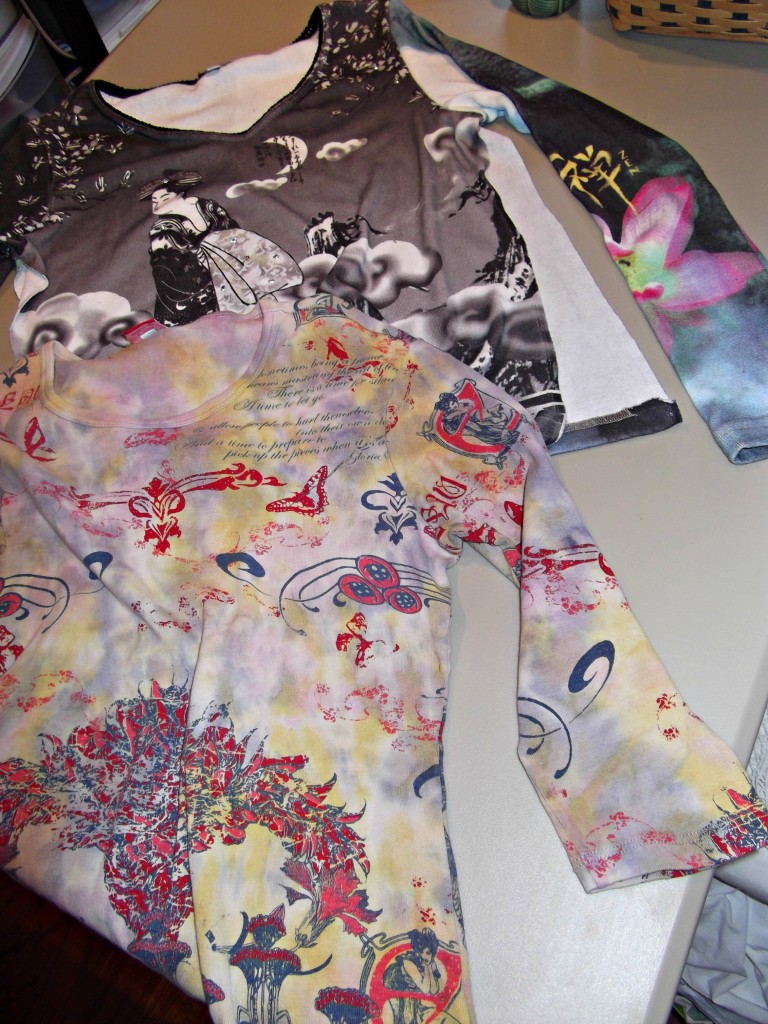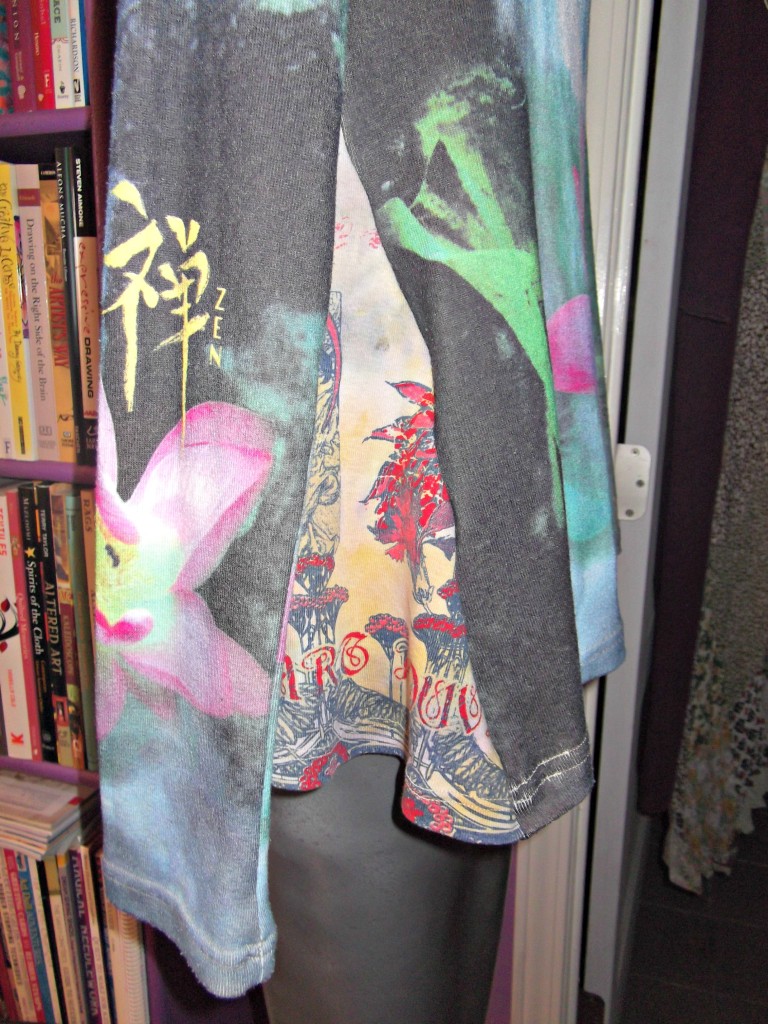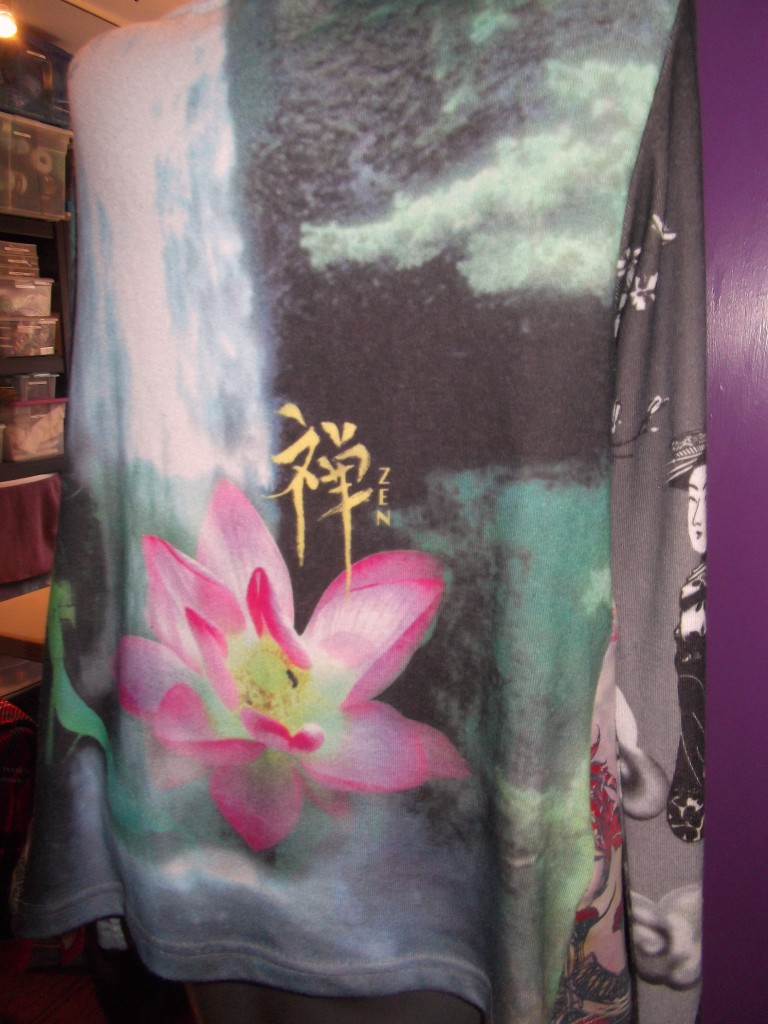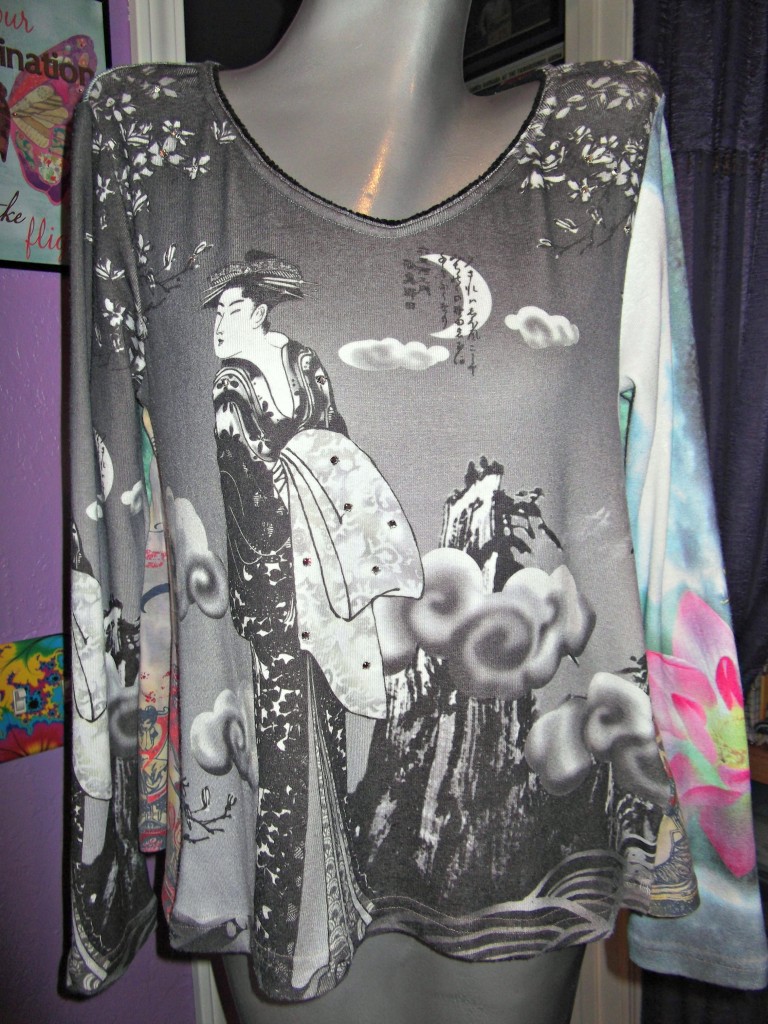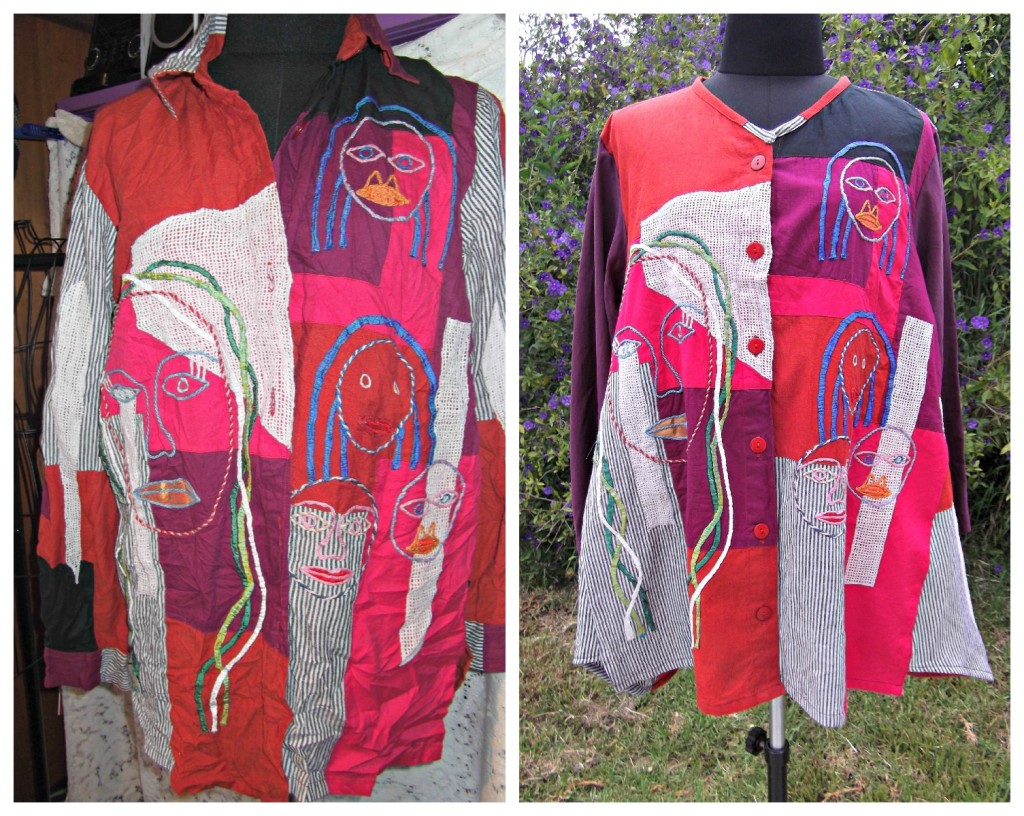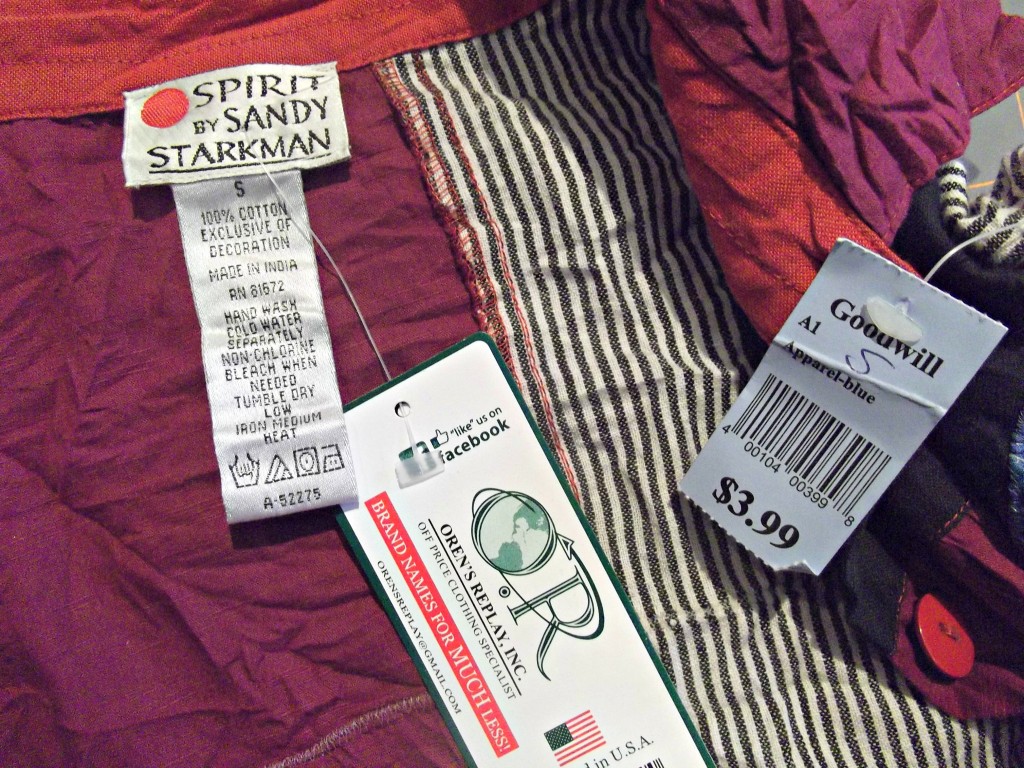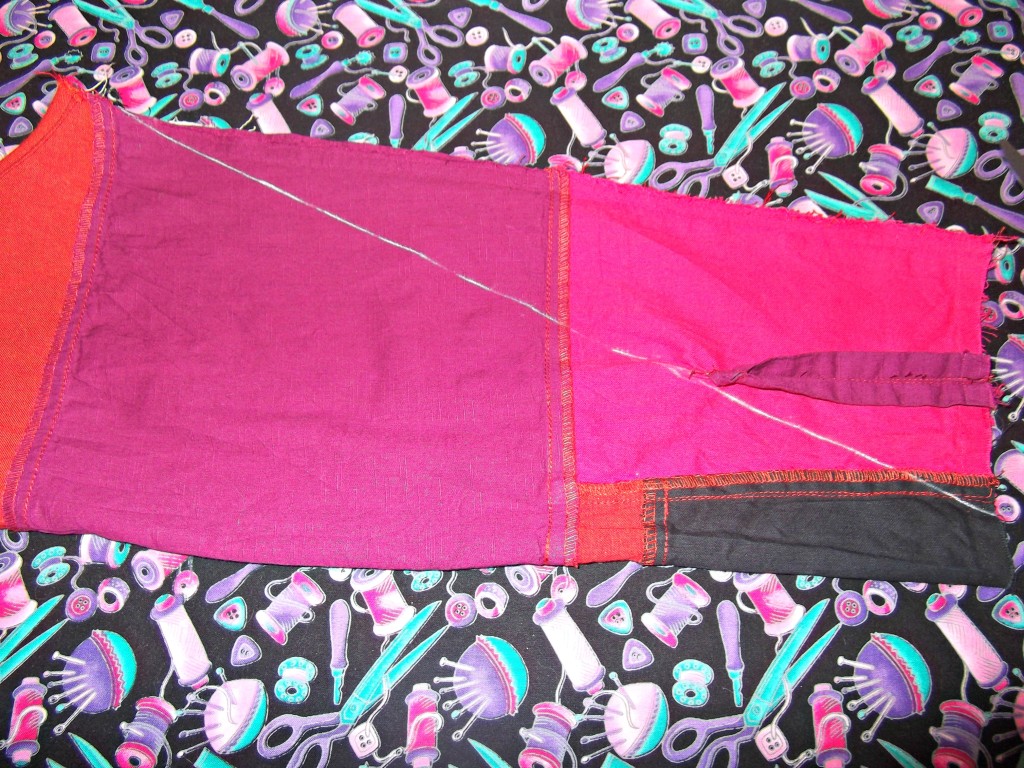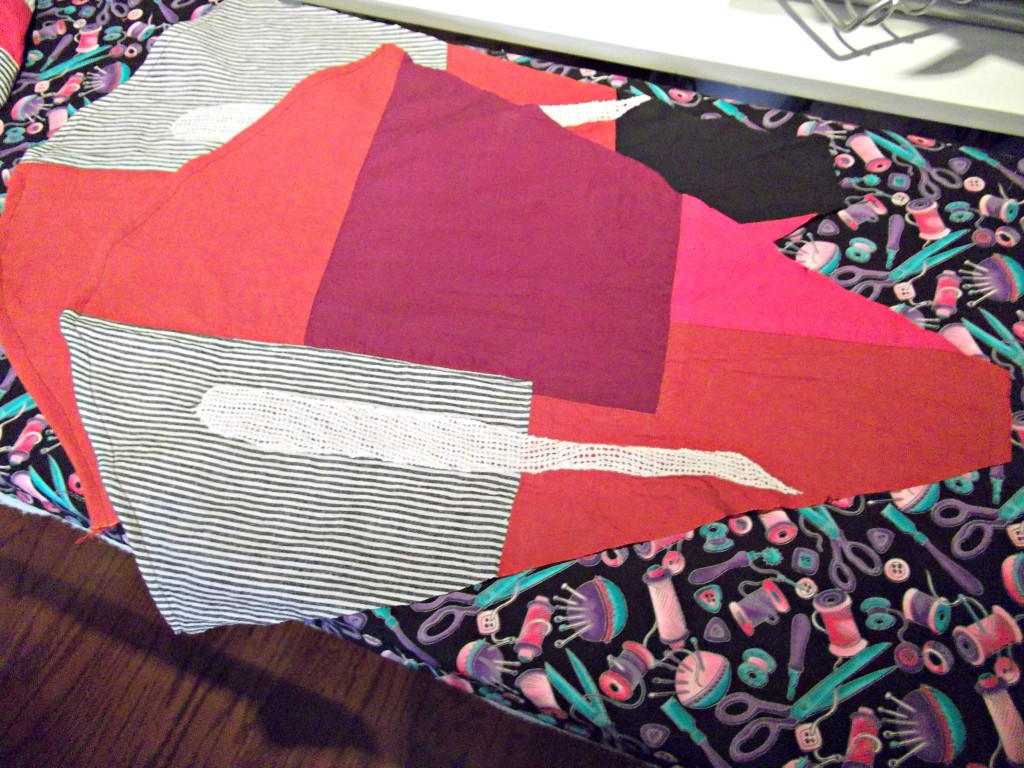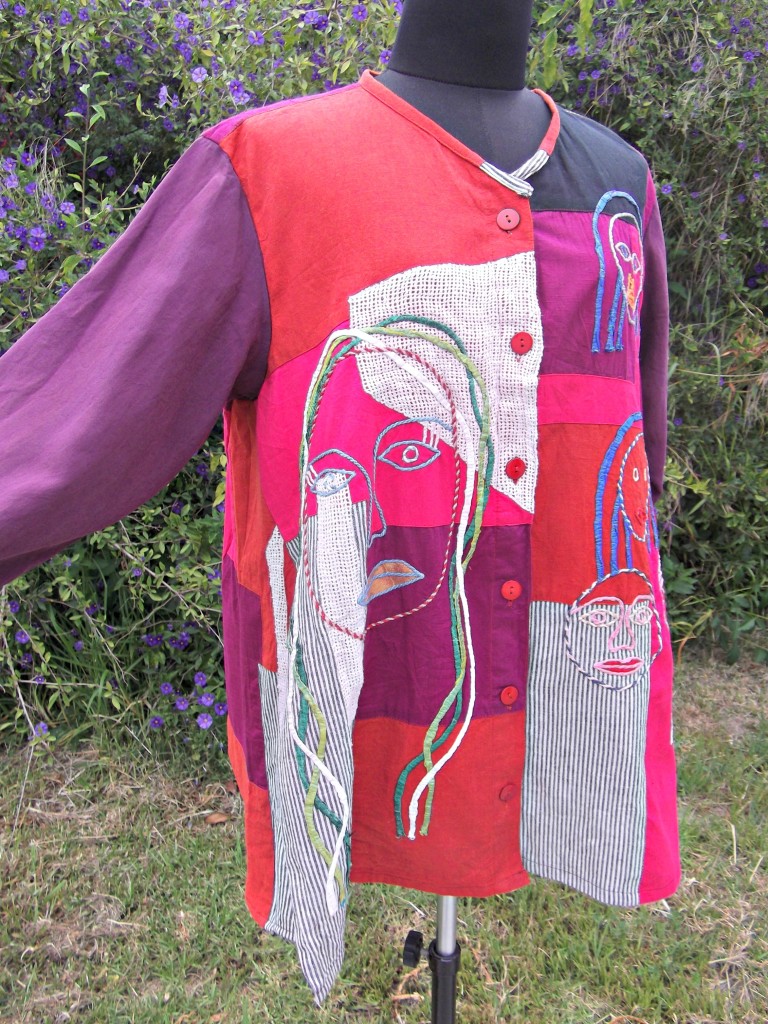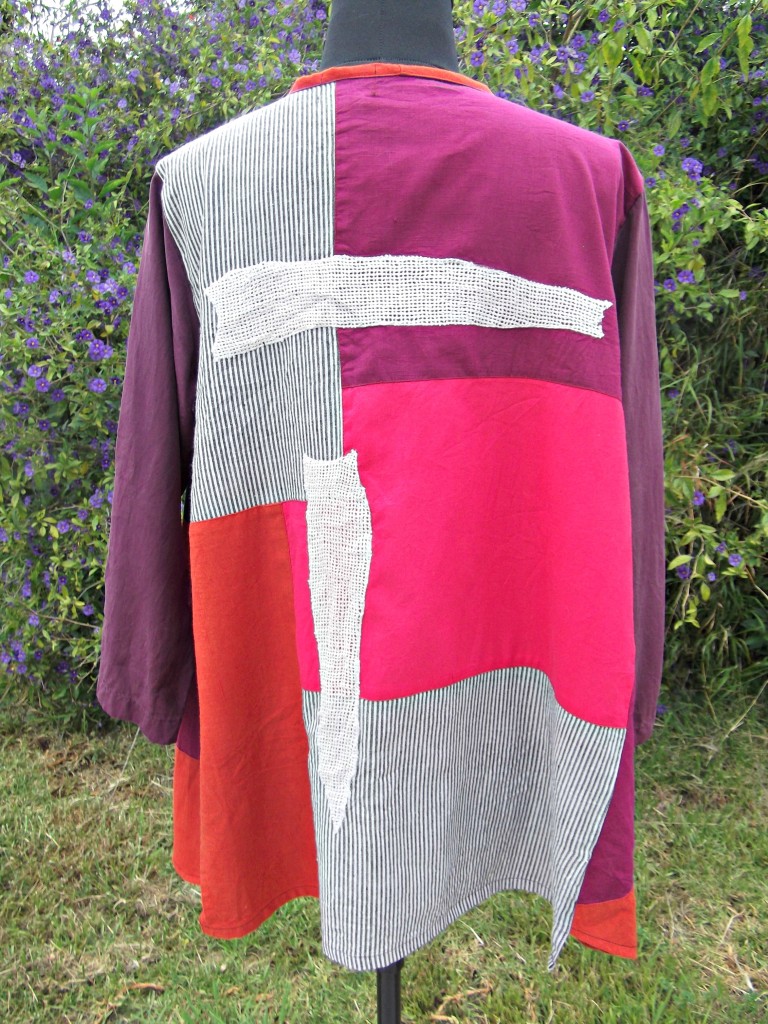I like flowy tunic tops that I can wear with leggings (and boots in winter). I had a long sleeved lavender rib knit top by French Laundry in size large which was loose and comfy, but it had a few oily food stains on the lower front. I decided to make a baby doll dress or tunic from it, as it has lace detailing around the neck which makes it feminine. All three of these tops came from thrift stores. The whole project took one hour from start to finish.
I put the top on and marked a line a few inches under my bustline, where I wanted the seam. I laid the shirt out on my work table and drew my cutting line in chalk. I later learned that my original curve was too deep, so I have corrected my original line in black. Cutting curved lines instead of straight across is more figure flattering and less boxy. I would recommend not cutting your sides any lower than about 2-3 inches from the line at the middle. (I had to unpick my serger seams at the sides and cut out the excess fabric because it did not hang right. It might have worked if I was attaching a woven fabric skirt, but the knits just weren’t having it.)
Next I took a top with bead and sequin embellishment by Sonoma Life+Style in size petite large, and prepared it for becoming half of the attached skirt.
I cut off the sleeves so that the serged seam was still attached to the sleeve. Then I trimmed both sides to get rid of the underarm area.
I cut the top part of the shirt off about an inch or so below the neckline. On the right you will see where my serged seam meets the original seam. I stitched from the bottom up, easing the fabric toward the top. I left the other side open. The visible stitching on the front is where the beads and sequins have been hand sewn on. Make sure to remove any embellishments along the seam lines. I thought I got them all, but I missed one and it held up my serger stitching. (You also don’t want to risk damaging your machine or your eyes, if a needle breaks.) The former embellished front of the top will now be the center front of the dress.
Then I repeated the process with a second top, this one by Kathmandu Imports, size medium. It is made up of stamp printed tie dye knit squares serged together. I could have made all of my seams serged on the outside, but I decided to leave my serged seams on the inside, allowing this shirt to provide contrast and visual interest.
I cut the top part off and serged the left side seam from the bottom to the top. Before I cut it across the top, I held it up to the first shirt, making sure that they were both the same length.
Now open up both pieces, and with the right sides facing each other, pin the sides. This is very important: Serge both seams from the bottom hemmed edge up toward the top edge. If you start from the top, you may have an uneven bottom edge by the time you get there.
Mark the center front and the center back of the top shirt with chalk. Now with right sides together, pin the top of the skirt to the bottom of the top shirt. The seams where the two former shirts that are now the skirt join will be pinned at the front center and back center marks. The side seams will be pinned to the top’s side seams. Now serge the seam all around, being careful not to catch fabric underneath.
Now turn right side out, and you are done! This is a very fast and easy project, giving new life to old knit shirts, and can be made in all sizes from kids to adults. I’ve accessorized my baby doll dress with a treasure necklace I made long ago. (It looks like bleach spotting there on the dress, but it’s just the sunlight coming through my orange tree.) I wore this out dancing the other night (the same day I made it), and it was very comfy with black fleece leggings and ankle boots. Give it a try! (If you don’t have a serger, use the mock serger knit stitch on your machine.)
